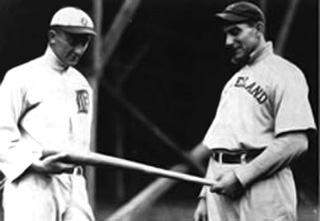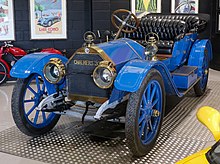
Tyrus Raymond Cobb, nicknamed "the Georgia Peach", was an American Major League Baseball (MLB) center fielder. He was born in rural Narrows, Georgia. Cobb spent 22 seasons with the Detroit Tigers, the last six as the team's player-manager, and finished his career with the Philadelphia Athletics. In 1936, Cobb received the most votes of any player on the inaugural ballot for the National Baseball Hall of Fame, receiving 222 out of a possible 226 votes (98.2%); no other player received a higher percentage of votes until Tom Seaver in 1992. In 1999, the Sporting News ranked Cobb third on its list of "Baseball's 100 Greatest Players."

Elmer Harrison Flick was an American professional baseball outfielder who played in Major League Baseball from 1898 to 1910 for the Philadelphia Phillies, Philadelphia Athletics, and Cleveland Bronchos/Naps. In 1,483 career games, Flick recorded a .313 batting average while accumulating 164 triples, 1,752 hits, 330 stolen bases, and 756 runs batted in (RBIs). He was elected to the Baseball Hall of Fame in 1963.

Napoléon "Nap" Lajoie, also known as Larry Lajoie and nicknamed "the Frenchman", was an American professional baseball second baseman and player-manager. He played in Major League Baseball (MLB) for the Philadelphia Phillies, Philadelphia Athletics (twice), and Cleveland Naps between 1896 and 1916. He managed the Naps from 1905 through 1909.

The 3,000-hit club is the group of 33 batters who have collected 3,000 or more regular-season hits in their careers in Major League Baseball (MLB). Reaching 3,000 hits has, "long considered the greatest measure of superior bat handling" and is often described as a guarantee of eventual entry into the Baseball Hall of Fame.
Pete Palmer is an American sports statistician and encyclopedia editor. He is a major contributor to the applied mathematical field referred to as sabermetrics. Along with the Bill James Baseball Abstracts, Palmer's book The Hidden Game of Baseball is often referred to as providing the foundation upon which the field of sabermetrics was built.

John Michael "Red" Corriden was an American player, coach, manager, and scout in Major League Baseball. A shortstop and third baseman in his playing days, Corriden appeared in 223 big league games with the St. Louis Browns (1910), Detroit Tigers (1912) and Chicago Cubs (1913–15), batting .205 with 131 hits. He was born in Logansport, Indiana.

William Reginald Armour was an American professional baseball player and manager. He was the manager of the Cleveland Bronchos in 1902 when they signed Nap Lajoie to the most lucrative contract in baseball history and the manager of the Detroit Tigers when they acquired Ty Cobb in 1905.

John Joseph O'Connor, also known as Peach Pie, was a utility player in Major League Baseball in the American Association, the National League, and the American League, primarily used as an outfielder. O'Connor appeared in games across four decades.
The following are the baseball events of the year 1910 throughout the world.

John Landis Bassler was an American professional baseball player and coach. He played as a catcher in professional baseball for 26 seasons between 1911 and 1937, including nine seasons in Major League Baseball with the Cleveland Naps in 1913 and 1914 and the Detroit Tigers from 1921 to 1927. Bassler was one of the 1920s Tigers who benefited from the hitting instruction of Ty Cobb.
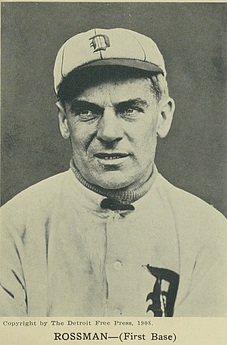
Claude R. Rossman was an American baseball player. He played professional baseball for 12 years from 1903 to 1914, principally as first baseman, including five years in Major League Baseball with the Cleveland Naps, Detroit Tigers (1907–1909) and St. Louis Browns (1909). He appeared in 511 major league games and compiled a .283 batting average and a .318 on-base percentage.

Duff Gordon "Sir Richard" Cooley was an American professional baseball player whose career spanned 17 seasons, 13 of which were spent in Major League Baseball (MLB). Cooley, an outfielder and first baseman, had a career batting average of .294 in 1,317 games played. He compiled 849 runs, 1,579 hits, 180 doubles, 102 triples, 26 home runs, and 557 runs batted in (RBI). In Major League history, he is tied in 148th place for most all-time triples and, his 224 career stolen bases, place him equal 279th on the all-time list. Cooley made his Major League debut at the age of 20, and spent the majority of his career there, but he also appeared in minor league baseball. After breaking his leg with the Tigers in 1905, he was replaced with future Hall of Fame outfielder Ty Cobb. Cooley, nicknamed "Sir Richard" due to his aristocratic manner, was listed as standing 5 feet 11 inches (180 cm) and weighing 158 pounds (72 kg).

Harry Taylor Howell was an American professional baseball player who played as a pitcher for the Brooklyn Bridegrooms/Brooklyn Superbas, Baltimore Orioles (1899), Baltimore Orioles/New York Highlanders (1901–03), and St. Louis Browns (1904–10).
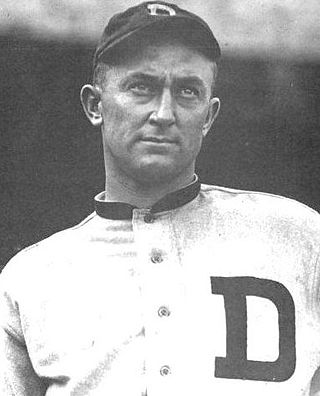
The 1915 Detroit Tigers won a club-record 100 games and narrowly lost the American League pennant to the Boston Red Sox, who won 101 games. Though four other Tigers teams have won 100 games, only the 1934 Tigers had a better winning percentage. The 1915 Detroit Tigers team is remembered for its all-star outfield of Ty Cobb, Sam Crawford, and Bobby Veach—who finished #1, #2, and #3 in the American League in both runs batted in and total bases. Baseball historian Bill James ranks the Tigers' 1915 outfield as the best in major league history.
The 1909 Detroit Tigers won the American League pennant with a record of 98–54, but lost to the Pittsburgh Pirates in the 1909 World Series, 4 games to 3. The season was their ninth since they were charter members of the American League in 1901. It was the third consecutive season in which they won the pennant but lost the World Series. Center fielder Ty Cobb won the Triple Crown and pitcher George Mullin led the league in wins (29) and winning percentage (.784).
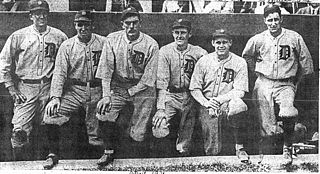
The 1921 Detroit Tigers finished in sixth place in the American League, 27 games behind the Yankees, with a record of 71–82. Despite their sixth-place finish, the 1921 Tigers amassed 1,724 hits and a team batting average of .316—the highest team hit total and batting average in American League history. Detroit outfielders Harry Heilmann and Ty Cobb finished No. 1 and No. 2 in the American League batting race with batting averages of .394 and .389, and all three Detroit outfielders ranked among the league leaders in batting average and RBIs. As early proof of the baseball adage that "Good Pitching Beats Good Hitting", the downfall of the 1921 Tigers was the absence of good pitching. The team ERA was 4.40, they allowed nine or more runs 28 times, and only one pitcher had an ERA below 4.24.
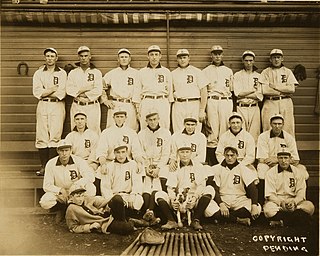
The 1907 Detroit Tigers won the American League pennant with a record of 92–58, but lost to the Chicago Cubs in the 1907 World Series, four games to none. The season was their seventh since they entered the American League in 1901.
The 1912 Cleveland Naps season was a season in American baseball. The Naps had two of the best hitters in the majors in Shoeless Joe Jackson and Nap Lajoie. Despite this, they ended up back in the second division, finishing in fifth place with a record of 75–78.
The 1911 Cleveland Naps season was a season in American major league baseball. It involved the Cleveland Naps attempting to win the American League pennant and finishing in third place. They had a record of 80 wins and 73 losses.
The 1910 Major League Baseball season was contested from April 14 to October 23, 1910. The Chicago Cubs and Philadelphia Athletics were the regular season champions of the National League and American League, respectively. The Athletics then defeated the Cubs in the World Series, four games to one.
